Dogs, our beloved furry companions, can sometimes exhibit behaviors that can be endearing, amusing, or downright frustrating. One particularly common issue that many dog owners face is their dog's tendency to jump on people. While it may seem like an innocent and playful gesture, excessive jumping can be a nuisance and even pose a safety hazard, especially for young children or the elderly. Fortunately, with patience, consistency, and a positive reinforcement approach, it is entirely possible to train your dog to keep all four paws on the ground and resist the urge to jump up on people.
Before delving into training methods, it is crucial to understand why dogs jump in the first place. Identifying the underlying causes of your dog's behavior will provide you with valuable insights and enable you to tailor your training approach accordingly.
Understanding Why Dogs Jump
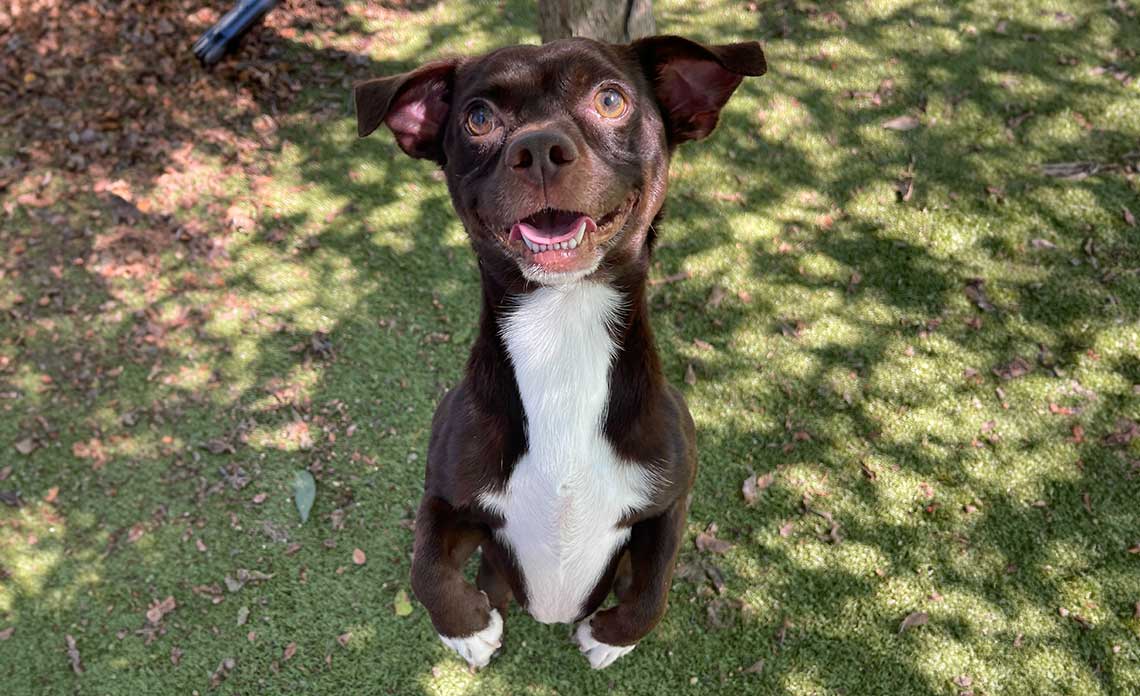
- Attention Seeking: Jumping can be a way for dogs to demand attention from their owners or strangers. They may perceive jumping as a means of initiating interaction and receiving affection.
- Excitement: Dogs are naturally enthusiastic creatures, and they may jump out of pure excitement when greeting people or encountering something they find particularly stimulating.
- Lack of Training: Many dogs have not been taught proper behaviors and may not understand that jumping is unacceptable. This is especially true for younger dogs or rescues who may not have received any formal training.
Now that we have a better understanding of why dogs jump, let's dive into the steps you can take to train your dog to refrain from this unwanted behavior.
Teach Your Dog Relaxation
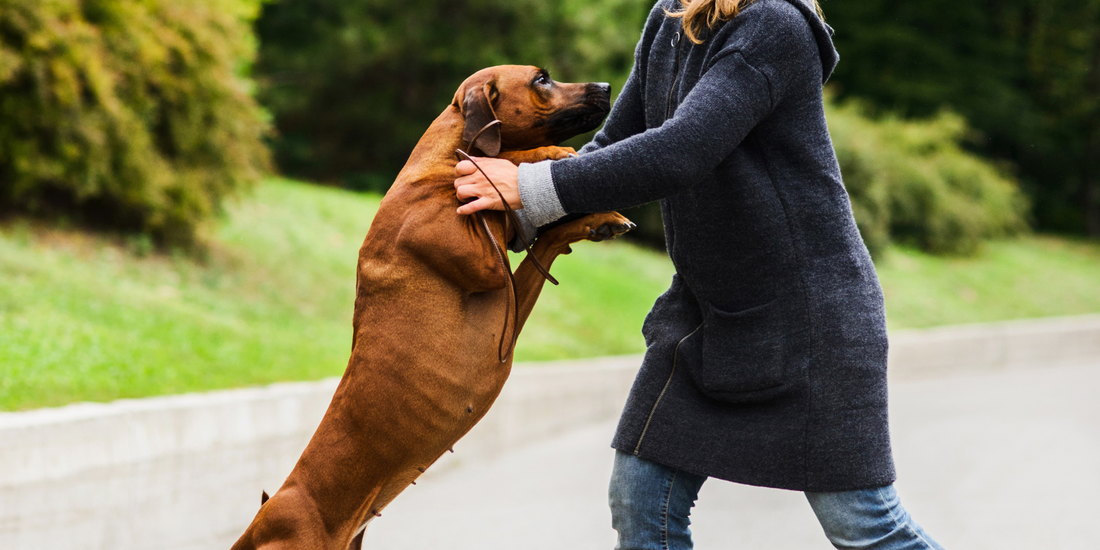
One effective technique for curbing unwanted jumping behavior is to teach your dog relaxation. By teaching your dog to relax on command, you can help them manage their excitement and reduce their urge to jump. Here's how to do it:
Step 1: Find a Calm Environment
Start by finding a quiet and peaceful environment where your dog can relax without being distracted. This could be a quiet room in your house or a secluded spot in your backyard.
Step 2: Encourage Relaxation
Once you have found a suitable location, encourage your dog to lie down and relax by using a calm and soothing voice. You can also use treats or a favorite toy to help them settle down.
Step 3: Use a Relaxation Command
Choose a simple and unique command, such as "relax" or "settle," and use it every time you want your dog to relax. Repeat the command while your dog is lying down, and reward them when they stay calm and relaxed.
Repeat this exercise regularly, gradually increasing the amount of time your dog stays relaxed. This will not only help with jumping behavior but also promote overall relaxation in your dog.
Steps To Stop Your Dog Jumping On Visitors
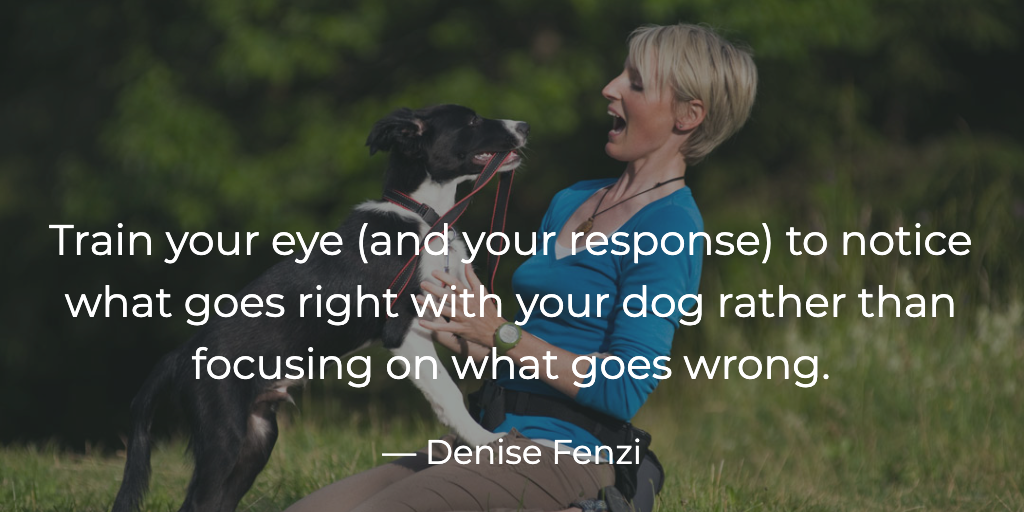
If your dog tends to jump on visitors when they come over, it can be embarrassing and even dangerous. Here are some steps you can take to prevent this behavior:
Step 1: Start With Basic Obedience Training
Before addressing unwanted jumping behavior, it's essential to establish basic obedience training with your dog. This includes commands like "sit," "stay," and "down." These commands will help you gain control over your dog and make it easier to manage their jumping behavior.
Step 2: Practice Greeting Behaviors
Teach your dog an alternative behavior to jumping when greeting visitors. For example, you can train them to sit or stay when someone approaches instead of jumping. Reward them for good behavior to reinforce this new habit.
Step 3: Ask Visitors To Ignore Your Dog
Instruct your visitors to ignore your dog if they jump on them. This may be difficult, especially for those who love dogs, but consistency is key. If your dog does jump, have your visitors turn away and avoid giving any attention until your dog calms down.
No Jumping: Training for Calmness
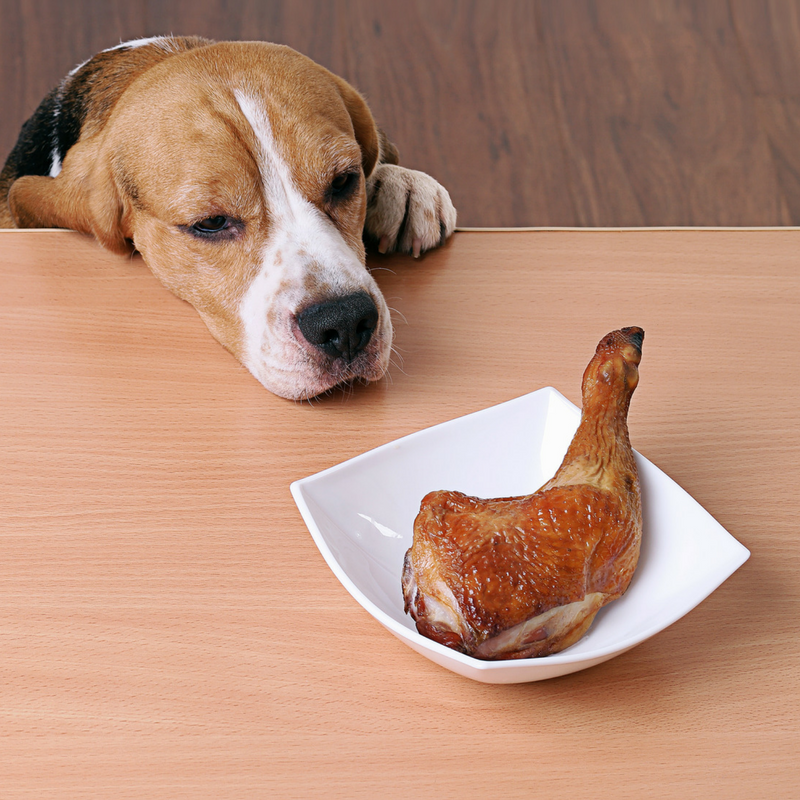
Teaching your dog to be calm in different situations can help prevent jumping. Here are some training techniques you can use:
Step 1: Train Your Dog to Be Calm on Command
Similar to teaching relaxation, you can train your dog to be calm on command by using a specific word or phrase. This will help them associate that word with a peaceful and relaxed state.
Step 2: Reward Calm Behavior
When your dog shows signs of being calm, such as lying down or staying still, reward them with treats or praise. This will reinforce the behavior and encourage your dog to remain calm in similar situations.
Step 3: Gradually Increase the Difficulty
Start by practicing in a quiet environment, then gradually introduce distractions, like toys or people. Increase the level of difficulty slowly, so your dog has time to adjust and learn to stay calm in various situations.
3 Training Techniques To Stop Your Dog's Jumping
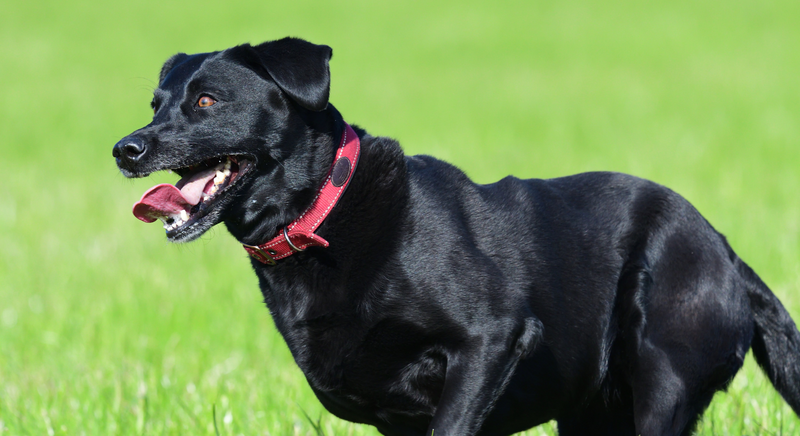
There are several effective training techniques you can use to curb your dog's jumping behavior. Here are three popular methods:
1. Positive Reinforcement
Positive reinforcement is a popular and highly effective method of training dogs. This technique involves rewarding good behavior with praise, treats, or playtime. For example, when your dog greets someone calmly without jumping, immediately give them a treat or praise them with a cheerful tone.
2. Negative Punishment
Negative punishment involves taking away something desirable from your dog when they display undesirable behaviors. For example, if your dog jumps on you, turn around and walk away, removing your attention and affection. This will teach your dog that jumping results in losing something they want.
3. Clicker Training
Clicker training is a form of positive reinforcement that uses a clicking noise to mark desired behaviors, followed by a reward. This method can be useful for teaching your dog to stay calm and not jump on people. When your dog remains calm, click the clicker and give them a treat.
How To Curb Unwanted Jumping
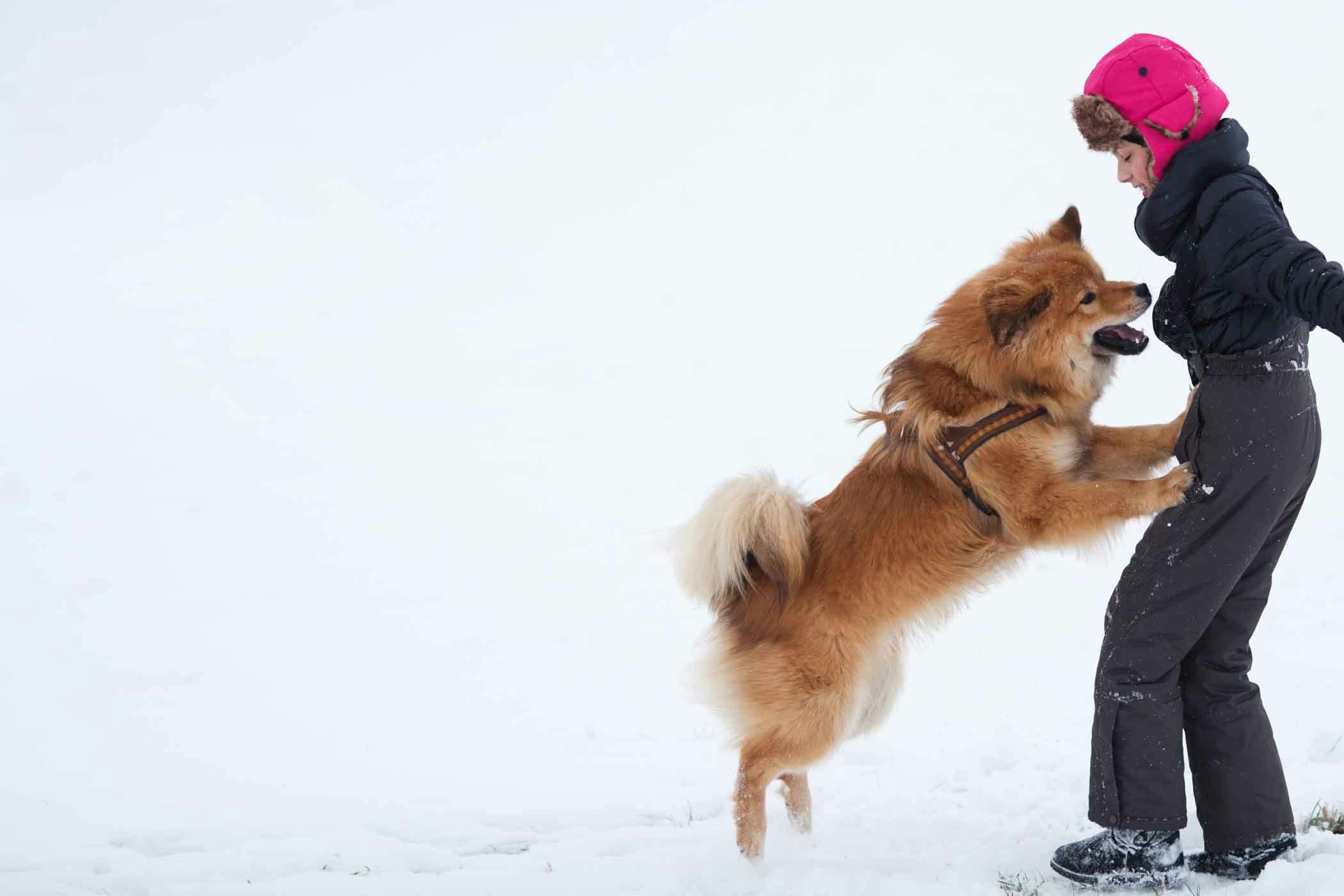
In addition to training techniques, there are other steps you can take to curb unwanted jumping behavior in your dog:
1. Socialization
Proper socialization from a young age is crucial in preventing unwanted behaviors in dogs, including jumping. Expose your dog to different people, places, and situations to help them become more comfortable and less likely to jump.
2. Exercise
Dogs, especially high-energy breeds, need regular exercise to release their excess energy and prevent boredom. A tired dog is less likely to engage in unwanted behaviors like jumping.
3. Be Consistent
Consistency is key when training your dog. Make sure all members of your household are on the same page and follow the same rules when it comes to curbing jumping behavior. Conflicting commands or inconsistent training can confuse your dog and hinder progress.
Reactive Dog Training At Home
If your dog already has a habit of jumping on people, addressing the issue at home is essential. Here are some tips for reactive dog training:
Step 1: Start With Basic Obedience Training
As mentioned earlier, basic obedience training is vital when addressing jumping behavior. It will help you gain control over your dog and provide a solid foundation for more advanced training.
Step 2: Use Distractions
To teach your dog to remain calm when visitors arrive, use distractions such as treats or toys to keep their focus away from jumping. Reward them for being calm while distractions are present.
Step 3: Work on Timing
Timing is crucial when addressing jumping behavior. You must intervene before your dog jumps to redirect their attention and avoid reinforcing the behavior.
Simple Steps To Stop Your Dog's Jumping
Here are some simple steps you can take to address and prevent jumping behavior in your dog:
1. Be Patient and Consistent
Training takes time and patience, especially when it comes to changing behaviors like jumping. Be consistent with your training techniques, and remember to reward good behavior.
2. Use Body Language
Dogs are highly perceptive of body language. When teaching your dog not to jump, use your body language to communicate what you want them to do. For example, stand still with your arms crossed when your dog starts jumping, showing them that you're not interested in their behavior.
3. Seek Professional Help
If despite your efforts, your dog continues to exhibit unwanted jumping behavior, consider seeking professional help from a certified dog trainer or behaviorist. They can provide personalized advice and tailored training techniques for your specific situation.
Manage Your Dog's Excitement And Jumping
Managing your dog's excitement levels is crucial in preventing jumping behavior. Here are some tips for managing your dog's excitement:
1. Avoid Overstimulating Your Dog
Dogs can get overexcited by things like loud noises, fast movements, or too much attention. Be mindful of your dog's triggers and try to minimize their exposure to these situations.
2. Teach Calming Behaviors
As mentioned earlier, teaching your dog relaxation and calmness on command can be effective in managing their excitement levels.
3. Provide Mental Stimulation
Along with physical exercise, mental stimulation is essential for keeping your dog calm and balanced. Engage your dog in activities like puzzle toys or obedience training to keep their mind occupied and prevent excess energy from turning into unwanted behaviors.
Training Tips For Dogs That Jump
- Start training as early as possible to prevent jumping behavior from becoming a habit.
- Use high-value treats to reward good behavior and make training more effective.
- Be patient and consistent, and remember that every dog learns at their own pace.
- Avoid using punishment or physical force, as it can harm your relationship with your dog and may lead to more unwanted behaviors.
- Seek professional help if needed.
Dog Training: How To Stop Jumping Up
- Identify the underlying cause of your dog's jumping behavior before starting training.
- Teach your dog an alternative behavior, such as sitting or staying, when greeting people.
- Reward calm behavior and teach your dog to relax on command.
- Use training techniques like positive reinforcement, negative punishment, and clicker training to address jumping behavior.
- Manage your dog's excitement levels through proper exercise, socialization, and mental stimulation.
- Seek professional help if necessary.
Conclusion
Training your dog not to jump on people may seem like a daunting task, but with patience, consistency, and the right approach, it is entirely achievable. Remember to identify the root cause of your dog's jumping behavior and tailor your training techniques accordingly. With time and effort, you can curb your dog's jumping behavior and enjoy calm and peaceful greetings with your furry companion.



